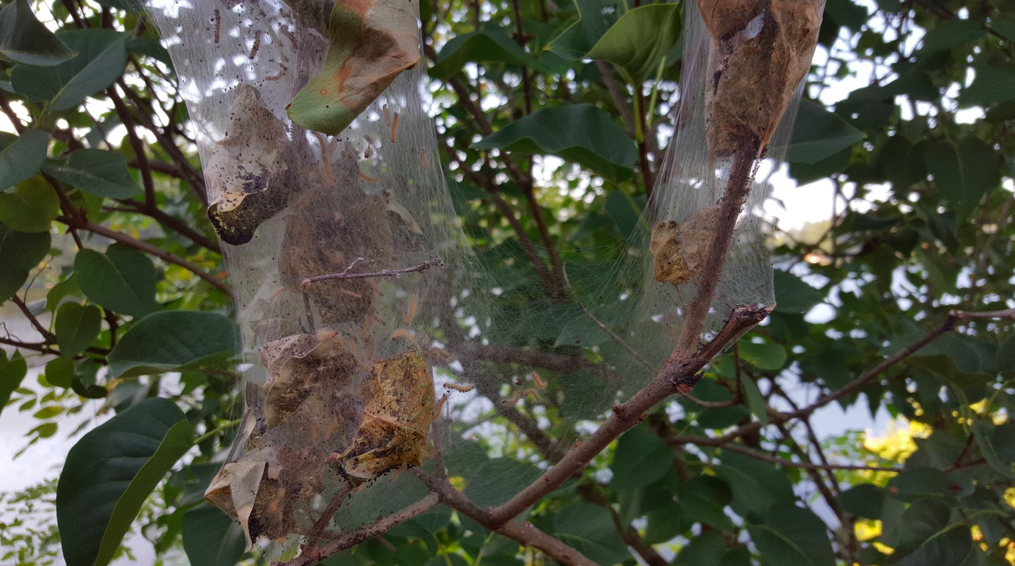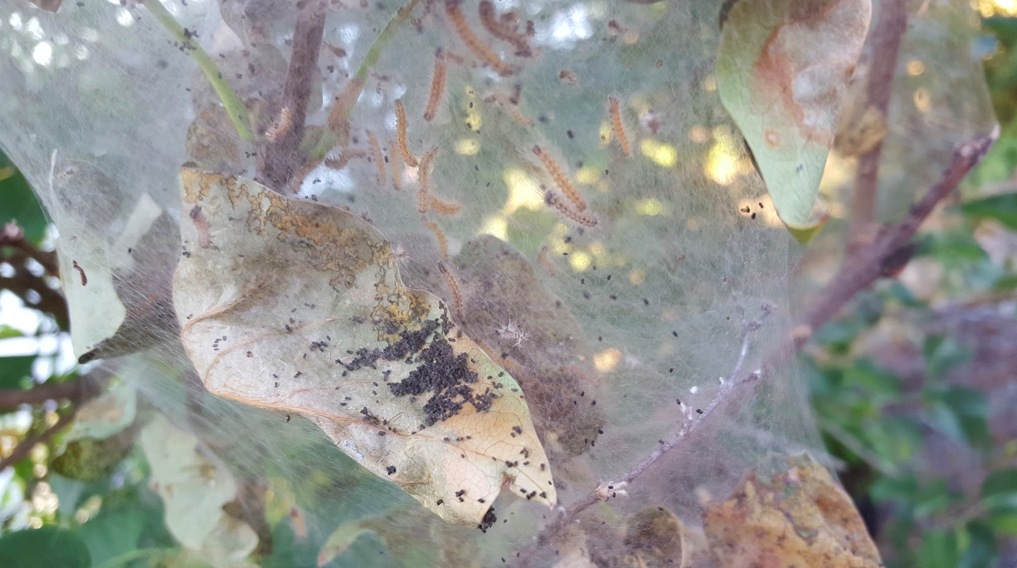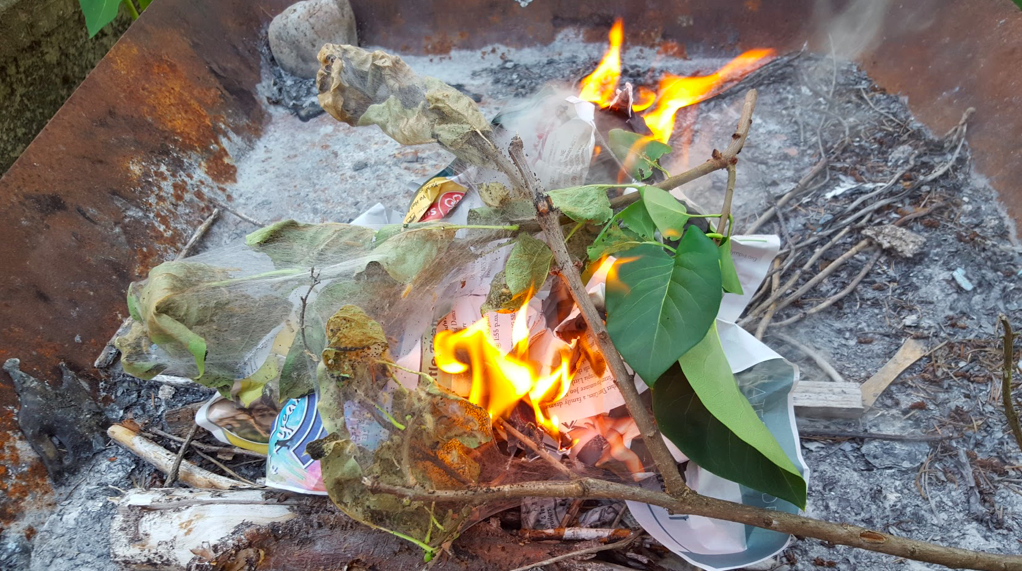What Tangled Webs They Weave

Upon returning from more than a week out of state, I was pleased to see how my garden had progressed since I had last seen it! It is something you don’t appreciate as much when you see your garden every day.
One thing that awaited me did not make me happy though: webbing in my lilac bush. The webbing was from a very small infestation of the fall webworm.
Fall webworms are often confused with tent caterpillars and even gypsy moths. Unlike the tent caterpillar that makes its tents in trees in the spring, the fall webworm shows up late summer to fall, making webs in your trees and shrubs and eating the leaves.
Fall webworms generally are found on the ends of just a few branches, although they can defoliate an entire tree or shrub with a severe infestation. While they are more of a cosmetic nuisance than a real problem, it can weaken a tree or shrub that is already suffering from drought or other stresses.
If the damage to your tree or shrub doesn’t bother you, you don’t need to take any action unless there is a large infestation. They will pupate as the weather cools and emerge as white moths in the spring.
As I mentioned, however, lilacs are my favorite flower, so I decided to take action.
Because I had a small infestation, it was easy to prune out the two branches that were impacted. To stop the webworms from spreading, they must be destroyed. I made a small contained fire and burned the pruned branches. Other non-pesticide options include submerging the branches in soapy water or hand picking the larva if the infestation is small.
If you have a large infestation, using a pesticide may be your best option to save your tree/shrub. There are effective synthetic and organic labeled for use in controlling webworms that consist of bacteria that are target only to caterpillars and won’t harm predators of the webworm or bees. To be most effective, they must be applied as soon as the webworms are detected while the webs are still relatively small. If you do choose a pesticide, whether synthetic or conventional, use one that is as targeted as possible and follow the label instructions closely.
Garden on!
 Fall webworm nest in my lilac tree
Fall webworm nest in my lilac tree
 Fall webworm frass – all of the black spots are caterpillar droppings
Fall webworm frass – all of the black spots are caterpillar droppings
 Burning infested branches in a contained area
Burning infested branches in a contained area
